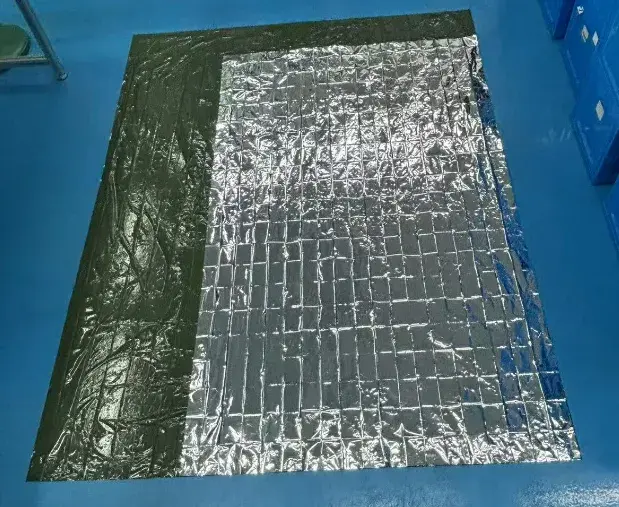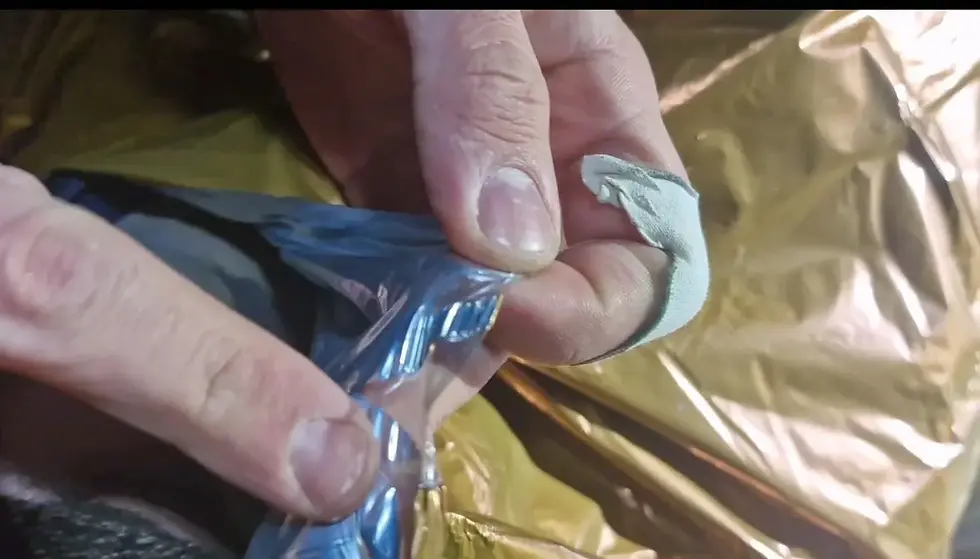Are Emergency Blankets Reusable? A Complete Guide for Survival
- YEYETAC™

- Aug 26
- 4 min read
Updated: Sep 25

Preparing for emergencies can be overwhelming and costly. Many preppers wonder if they can reuse their emergency blankets to save money, but worry about compromising safety or effectiveness.
Yes, emergency blankets are reusable to varying degrees depending on type and quality. Standard mylar emergency blankets can be reused 2-3 times with careful handling, while heavy-duty versions can last 10+ uses. However, once torn, punctured, or exposed to bodily fluids, they should be replaced for safety reasons.
What Types of Emergency Blankets Are Available for Reuse?

Worried your single emergency blanket won't last through multiple crises? Many preppers struggle with this common concern when building their emergency supplies.
Emergency blankets come in three main types with different reusability levels: thin disposable mylar (0.5-1 mil thickness) good for 1-3 uses, heavy-duty versions (2-4 mil) lasting 5-10+ uses, and fabric-backed models that can withstand 10+ uses. The thicker the material and better the construction, the more reuses you'll get from your investment.
Here's how different emergency blankets compare in durability:
How Can You Properly Reuse Standard Emergency Blankets?

To maximize emergency blanket reuse, handle with clean dry hands away from sharp objects, gently clean with mild soap and water after use, air dry completely, fold instead of crumple, and store in a sealed container away from heat and sunlight.
Following these simple steps can extend your blanket's lifespan from one emergency to several:
Lay the blanket flat on a clean, smooth surface
Wipe gently with a soft cloth dampened with mild soapy water
Rinse by wiping with a clean, damp cloth
Allow to air dry completely before storage
Never machine wash or use harsh chemicals
Storage technique dramatically affects longevity. The original accordion-style fold is ideal as it minimizes crease points. After folding:
Storage Recommendations:
Keep in a sealed plastic bag to prevent moisture damage
Store in your emergency kit away from sharp objects
Avoid compressed storage that might cause material fatigue
Keep away from heat sources that could degrade the reflective coating
For tactical medical trainers and first responders who need reliable equipment, implementing a regular inspection routine is essential. Before repacking, hold the blanket up to light to check for tiny holes or delamination of the reflective coating. These seemingly minor issues can significantly reduce a blanket's effectiveness in retaining body heat.
When Should You Never Reuse an Emergency Blanket?

Never reuse emergency blankets that have been exposed to blood or bodily fluids, have visible tears or punctures, show signs of delamination (flaking coating), or have been stretched significantly. In critical medical situations like treating hypothermia or shock, always use new blankets.
Safety must always take priority over cost savings when it comes to emergency equipment. There are specific scenarios where using a new blanket is the only responsible choice:
Medical and Contamination Concerns
Emergency blankets used in trauma situations may be contaminated with bodily fluids, creating biohazard risks. These cannot be safely sanitized for reuse. For military and tactical medical professional clients, maintaining strict protocols around contaminated materials is essential.
Even blankets that appear clean after exposure to blood may harbor pathogens in microscopic tears. The risk of cross-contamination makes reuse unethical and potentially dangerous.
Structural Integrity Issues
The reflective properties of emergency blankets come from an ultra-thin metal coating (usually aluminum) applied to a plastic substrate. This coating can deteriorate with:
Repeated folding and unfolding
Exposure to acidic sweat
UV radiation from sunlight
Physical abrasion during use
When this coating flakes or wears off, the blanket loses much of its heat-reflecting capability. A blanket that has lost more than 25% of its reflective coating should be considered compromised.
For YEYETAC™ clients conducting training exercises, using new blankets for each session might seem wasteful. However, a practical middle ground is to clearly mark training blankets as "NOT FOR EMERGENCY USE" and keep separate inventory for actual emergencies.
What Are the Best Practices for Emergency Blanket Maintenance?

Inspect emergency blankets every 6 months without removing from sealed packages. Store in cool, dry places away from sunlight and sharp objects. For opened blankets, refold along original lines, inspect for damage, and consider applying repair tape to small tears. Replace blankets in active kits annually.
Proper maintenance significantly extends the useful life of emergency blankets. For tactical medical professionals and instructors, developing a systematic approach to gear maintenance ensures reliability when lives are at stake.
Inspection Routine
Establish a regular schedule for checking emergency supplies:
Visual inspection: Even through sealed packages, check for signs of package damage, moisture infiltration, or discoloration
Rotation schedule: Mark purchase dates and follow a first-in, first-out approach
Documentation: Keep logs of when equipment was inspected and by whom
For opened blankets that you plan to reuse, a more thorough inspection is necessary:
Repair Possibilities
Minor damage doesn't always mean replacement is necessary. Small tears can be repaired with:
Mylar repair tape (specially designed for space blankets)
Clear packing tape (temporary fix)
Duct tape (reduces reflectivity but maintains wind/waterproofing)
Apply tape to both sides of the tear, smoothing out air bubbles. Remember that repaired blankets should be downgraded to secondary or backup status rather than primary emergency use.
Environment-Specific Considerations
Different storage environments present unique challenges:
Vehicle kits: Heat fluctuations can degrade mylar over time. Replace vehicle-stored blankets more frequently.
Humid environments: Use silica gel packets in storage containers to prevent moisture damage.
Field kits: Consider upgrading to heavier-duty options that can withstand rough handling.
Conclusion
Emergency blankets can be reused with proper care, but their reliability decreases with each use. Invest in quality for repeated use, replace compromised blankets immediately, and prioritize safety over savings in critical situations. Your emergency preparedness deserves the best balance of practicality and protection.
FAQs
How many times can I fold and unfold an emergency blanket?
Most emergency blankets can withstand 5-10 folding cycles before developing weak points along crease lines.
Can I repair a torn emergency blanket?
Small tears can be repaired with specialized mylar tape, but this should be considered a temporary fix for non-critical situations.
Do emergency blankets expire if unused?
Properly stored emergency blankets have no specific expiration date but should be visually inspected yearly for degradation.
Is it safe to reuse emergency blankets between different people?
For hygiene reasons, emergency blankets should not be shared between individuals unless properly sanitized between uses.
Can I wash an emergency blanket in the washing machine?
No, machine washing will destroy the reflective coating and structure of emergency blankets.



Comments